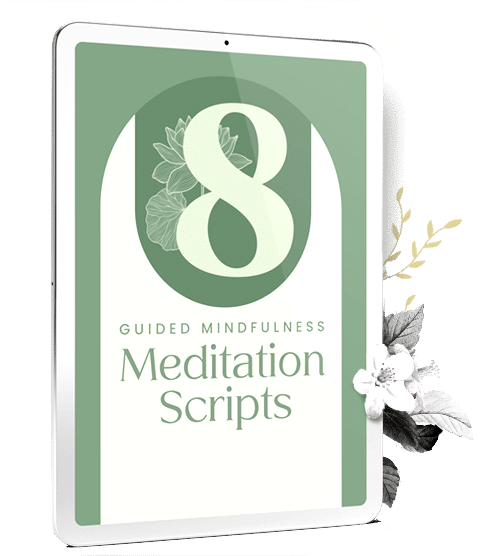Mindfulness is non-judgmental awareness of your present moment experience. Mindfulness is not only paying attention, but paying attention in a particular way that allows you to remain present with what is.
When we close our eyes and turn our attention inward, we’re not always equipped to remain present with what we notice. Studies on the use of mindfulness interventions in clinical settings find that mindfulness can increase symptoms in those with clinical anxiety, depression or a history of trauma.
If by paying attention what we notice exacerbates our suffering, then the practice of mindfulness alone is not going to help us feel better. When mindfulness backfires and makes us feel worse, it could be as simple as misunderstanding what mindfulness is, or an indication we need an additional helping hand.

Misunderstanding What Mindfulness is
Mindfulness is everywhere and is largely promoted as a cure all. Mindfulness is available at the office, at our yoga studio, at church and at home. Mindfulness is available on our cell phones, and therefore everywhere we go.
Mindfulness has become a popular hashtag, and in that process has been oversimplified. Quality mindfulness, or in-depth and skillfully taught mindfulness is not as easy to come by. This allows for the proliferation of misconceptions about what mindfulness is. The following are the top four:
Those who have tried mindfulness and come out frustrated on the other side are not alone. If this has happened to you, you didn't do it wrong. Frequently, this frustration is based on a misunderstanding of the high expectations we assign to mindfulness.
If a misconception about mindfulness has been plaguing your practice, it likely shows up as a subtle emotional reaction to self-exploration. You might feel restless and annoyed, or bored and detached from your practice. It’s just not giving you the results you expected. After learning more about mindfulness and shifting expectations, revisit the practice with fresh eyes.
If your reaction to mindfulness is unbearable, physically or emotionally distressing, something else might be going on. This warrants further exploration, perhaps outside of your mindfulness practice.

Trauma, Mental Illness and Mindfulness
Extreme negative reactions to mindfulness encompass a wide spectrum of physical sensations, thoughts and emotions. Turning inward toward self-awareness can invoke feelings of numbness, disassociation, depression or worry. You may feel breathless, anxious, or panicked. You might feel as though you’re frozen or trapped, or you may react by abandoning the practice or leaving the session.
Negative reactions to mindfulness may be clearly associated with a past memory or trauma, or you may not recognize where they are coming from. Sometimes bipolar vulnerability or past trauma is hidden, only to rise to the surface in a quiet moment of exploration.
Researchers are beginning to understand that mindfulness may still be valuable if you’re having these types of reactions, but with modifications applied under the direction of a skilled, trauma-informed guide.
Partner Awareness with Compassion
Mindfulness practices are historically rooted in Buddhist tradition. In separating mindfulness from Buddhism, some aspects of mindfulness tend to get emphasized more than others, especially the aspect of awareness. In Buddhism, this wisdom of awareness is never without its partner, compassion.
We must remember that mindfulness is not only paying attention, but includes the quality of how we pay attention. By inviting loving kindness into our practice, we can soften the more challenging thoughts, emotions and feelings that arise.
It’s easier to sit with anger, for example, if we can extend love to our anger. Anger is not who we are, it’s simply an arising energy. We don’t have to like it, but we practice loving it. We welcome it in and kindly ask what it’s trying to teach us. By sending love to our anger, we can give it freedom to move on and dissipate.
Working with self-compassion in mindfulness meditation may look like taking a short break, spending time with a different practice, or even shelving your mindfulness practice until you can work out more serious issues with a counsellor or therapist.
Remember Your Agency
Autonomy is the ability to self-govern, to act based on what your values and interests are. To be fully autonomous, we have to have a certain amount of self-worth and self-respect. The ego has to be healthy and strong, before we can ask ego to leave the room.
While a mindfulness teacher’s role is to guide us, we never give up our agency or autonomy. If we’re not ready to form clear boundaries because we don’t have strong values, if we’re not ready to feel confident in saying no, and taking a break, we might not be ready for mindfulness.
The Buddhist teacher Thanissaro Bhikkhu reminds us a healthy ego “enable(s) you to say No to the demands of your teachers when those demands would jeopardize your own best interest.” If you feel comfortable saying no, take a break from your practice and try the following STOP technique:
S: Slow down
T: Take a breath
O: Observe sensation in your body
P: Proceed only when you feel comfortable
If you don’t feel comfortable or safe in meditation, if your pain is too great for the STOP technique to have an effect, asking for more help than mindfulness alone can offer is a wise and self-compassionate step.
Ask for Help Beyond Mindfulness
Realizing you’re feeling extreme anxiety or depression is not the same thing as getting the necessary help to address it. Mindfulness is often not the cure all, yet may still be helpful when applied alongside other forms of therapy.
Working with a trauma-informed mindfulness teacher can bring a sense of safety, confidence and autonomy to your practice. You may also benefit from partnering mindfulness with counselling, psychotherapy, behavioral cognitive therapy, or spiritual practice.
There’s nothing wrong with shelving your mindfulness practice until you’ve developed the skills to self-monitor and make intentional, informed adjustments to your practice as needed. In fact, it may be the most mindful thing you can do.















